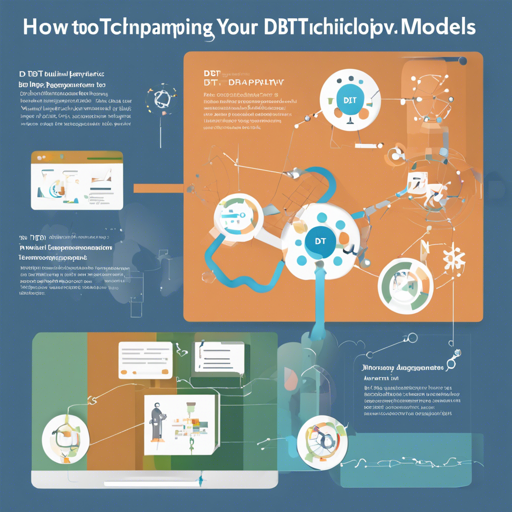Welcome to the world of dbtplyr, an exciting add-on package that allows you to elevate your dbt experience by programmatically selecting columns based on their names. Inspired by R’s across() and select helpers in the dplyr package, dbtplyr makes manipulating your data model more seamless.
Getting Started with dbtplyr
To use dbtplyr in your data models, you’ll utilize macros to define how you want to select and manipulate your data. Here’s a quick guide on how to get this set up.
Installation
Ensure you have dbt installed in your environment. You can install dbtplyr directly from your dbt project by adding it to your packages.yml file:
packages:
- package: emilyriederer/dbtplyr
version: [">=0.1.0"]Using dbtplyr Macros
Here’s where the magic begins. Let’s say you have a dataset called mydata, and you want to perform different operations on columns based on their prefixes – for example, summing columns that start with ‘N’ and averaging those that start with ‘IND’ in the dataset mydata. This can be efficiently achieved using dbtplyr:
% set cols = dbtplyr.get_column_names(ref(mydata))
% set cols_n = dbtplyr.starts_with('N', cols)
% set cols_ind = dbtplyr.starts_with('IND', cols)
select
dbtplyr.across(cols_n, sum(var) as var_tot),
dbtplyr.across(cols_ind, mean(var) as var_avg)
from ref(mydata)
Analogy: Building Your Ideal Salad
Imagine you’re at a salad bar. You have various ingredients labeled with different tags – ‘Leafy’, ‘Veggie’, ‘Protein’, etc. Instead of picking each ingredient by hand, you tell the chef:
- “I want all the ‘Leafy’ ingredients in one bowl and all the ‘Protein’ ingredients in another.”
This is akin to how dbtplyr allows you to select columns based on their naming conventions. With a few instructions (macros), you can have your data neatly organized without the hassle of picking through everything manually!
Troubleshooting Tips
If you encounter issues when implementing dbtplyr, consider these troubleshooting ideas:
- Ensure that you have correctly set the column names in your reference. The macro
dbtplyr.get_column_names(ref(mydata))must point to an existing dataset. - Check for typos or mismatched prefixes in
starts_with()macros. It’s easy to overlook small details! - If no columns match your conditions, consider using the
final_commaparameter to handle empty matches gracefully.
For more insights, updates, or to collaborate on AI development projects, stay connected with fxis.ai.
List of Key Macros
dbtplyr comes with a rich set of macros that enhance your data manipulation. Here’s a quick look:
- Functions to apply operations across columns:
- across(var_list, script_string, final_comma)
- c_across(var_list, script_string)
- Functions to evaluate conditions across columns:
- if_any(var_list, script_string)
- if_all(var_list, script_string)
- Functions to subset columns by naming conventions:
- starts_with(string, relation or list)
- ends_with(string, relation or list)
- contains(string, relation or list)
- not_contains(string, relation or list)
- one_of(string_list, relation or list)
- not_one_of(string_list, relation or list)
- matches(string, relation)
- everything(relation)
- where(fn, relation) where fn is the string name of a Column type-checker
Documentation for these functions can be found on the package website or in the macros/macro.yml file on GitHub.
At fxis.ai, we believe that such advancements are crucial for the future of AI, as they enable more comprehensive and effective solutions. Our team is continually exploring new methodologies to push the envelope in artificial intelligence, ensuring that our clients benefit from the latest technological innovations.

